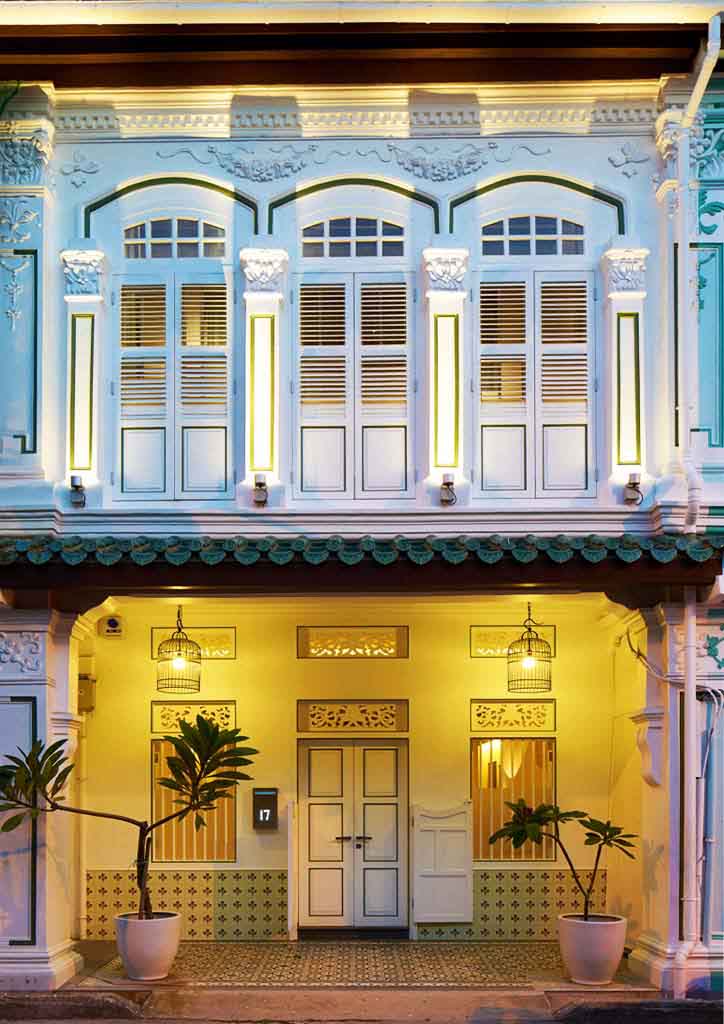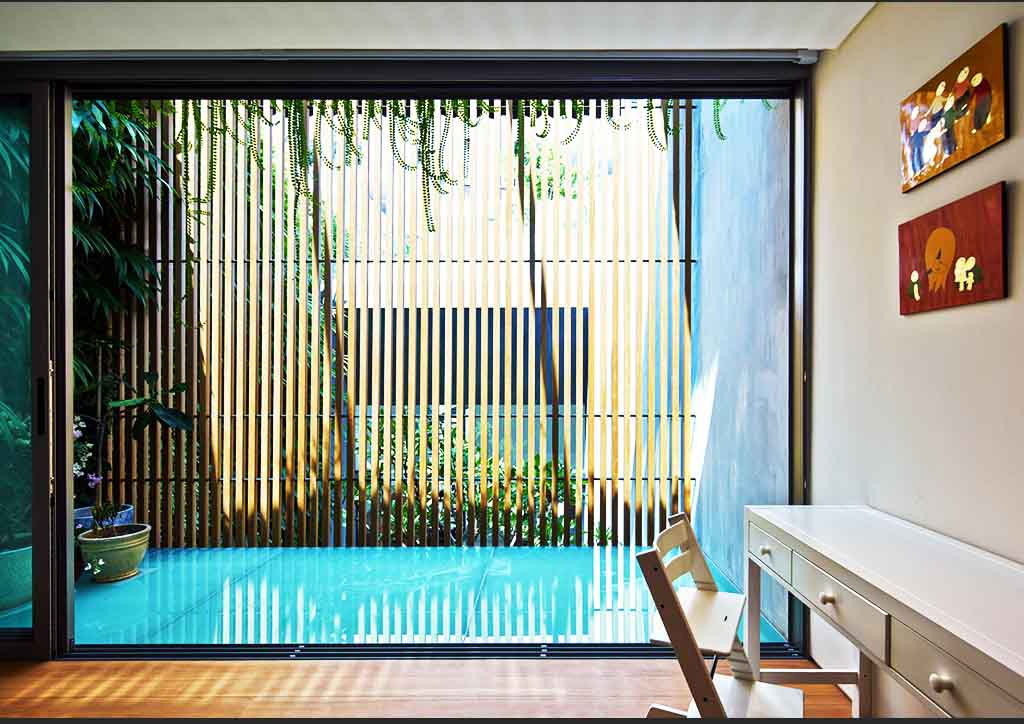
Well-designed spaces in a Singapore heritage shophouse

Blair Road is a quintessential row of shophouses, macaron-colored façades ornamented with relief and ceramic tiles showcasing the affluence of their first owners. The government made sure today’s walk through the district would not differ from one in the 1920s, when the terrace houses were built. However, the interiors of these heritage buildings have been adapted to contemporary living. We enter shophouse number 17. From the front door, one can see the black spiral service staircase at the very back of the house.
“The client requested for a really open space. The transparency allows him to watch his kids play in the courtyard while he’s in the living room or the kitchen, or even upstairs,” says project lead Tomas Jaramillo of ONG&ONG. Connecting spaces also meant connecting family life.

Before renovation began in 2010, the shophouse was used as an office and fell into disrepair—steel roll ups shuttered the ground floor fenestrations, and the inner courtyard was sealed to maximize the space for pencil-pushing. Turning the building into a family residence involved restoring 80 percent of the exteriors based on archival photos. The team also rebuilt granite brackets on the residential front. “One of the advantages of this typology is you can leave the main door open, but there’s still security from the half length swing doors in front called pintu pagar. It allows air to flow through,” says Jaramillo.

The courtyard was uncapped, and 37 square meters of turf replaced traditional granite floors. With a vertical garden covering the entire left wall and a tree thriving to the right, this verdant center is now the stomping grounds of little feet. It also serves as an exhaust and natural light source for the entire house. Other sources of indirect light and ventilation are the carved openings (similar to Filipino calado vents) above the front windows. All living spaces and bedrooms have ceiling fans because, on an average day, those are all the residents need to stay comfortable.
The traditional program in which service areas are at the rear of the shophouse is retained, amplified even. The client, an avid cook, asked for a large kitchen. The designers decided to stack the maid’s quarters, laundry room, and storage; all of which utilize the back wall. A small pool, which the kids enjoy on weekends, was built on the top deck. The rest of the volume is dedicated to the 6-meter-tall kitchen whose doors frame the tree and activity in the courtyard. “The kitchen is another portal from which you can enjoy the house,” says the architect.

Shophouses were designed narrow and 17 Blair Road, at 4.9 by 35 meters, is no exemption. Getting natural light in long volumes with party walls is a challenge. Of course, the courtyard is a big help but today’s residents may find a traditional shophouse still too dim. Besides a horizontal row of spaces imposed by the shophouse shell, the designers employed vertical transparency to resolve the issue of light. The team decongested the area near the entrance by removing the damaged timber staircase by the left party wall. Access to upper doors was moved to the center, right below the roof pitch. This transfer made room in the living area and emphasized the means of connectivity. It now occupies a more prominent, not to mention the tallest, part of the home. Also, the height allowed for a dramatic staircase.

“The staircase also works as a visual feature, like a sculpture,” says Jaramillo. “You can see how the whole house is connected by the void of the staircase.” Operable windows at the very top provide essential ventilation for hot air rising the void. Sunlight cascades to the ground floor where a smiling Mao statue in the heart of the stairwell basks with arms raised. When dinner’s ready, little heads peer from the upper landing as names are called out for meal time.
Shielding the daughter’s bedroom facing the courtyard and the master bath on top is a large teak screen, 4.8 meters tall, extending towards the roof. Bedroom sliding doors and bath windows can be le open without risking privacy. Low-e glass is used on the portion of the roof covering the bath’s terrace with plants. The screen is mounted on a sky blue glass overhang, easily mistaken for a re ection pool, that extends from the second- oor level. Given the materials used and with the skylight above, this small balcony lters light to the area below it.

Facing the street, the son’s bedroom maximizes a double volume dictated by conservation regulation: the designers were not permitted to build all the way to the front wall. “We proposed to have the master bedroom here with the view, the height, and the nice casement windows. However, they wanted to take the loft , which still benefits from the natural light,” says the architect. On days when the young boy is practicing piano, music fills the volume, and his parents can listen in by simply opening their loft windows. ![]()
READ MORE: Ned Carlos designs the Don Bosco Bi-Centennial School Building


